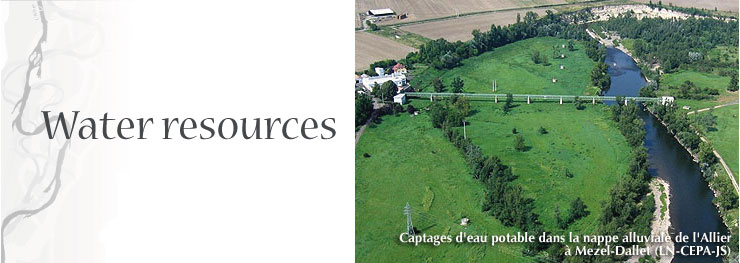|
Over an area of more than 500 km² between Brioude and Bec d'Allier, the Allier’s alluvial plain contains a groundwater table in close relationship with the river. The dynamics of the river and benefits of natural vegetation mean that this is good quality water. Extracted for consumption as drinking water, it is one of the major issues for the Allier valley.
|
A HUGE RESERVOIR
The Allier’s alluvial plain extends a total of 250 km into the Limagnes, and is over three km wide. The alluvia it is composed of, varying in thickness from a few metres to over 12 m, contain a water table closely linked to the river.
This alluvial sheet thus contains a huge volume of water, of an order of magnitude of 1 to 2 billion m3, much greater than, for example, the 0.19 billion m3 in Naussac reservoir. Exchanges between the river and the water table are complex, and fluctuate, but broadly speaking, the water table drains downstream, feeds the Allier in summer and recharges itself in winter.
INNATE FILTRATION ABILITY
The upstream part of the water contained in the alluvia is of good quality. This is due to the natural filtration ability of the alluvial plain. Water is filtered through the alluvia and purified of some of its nitrates and phosphates by the alluvial forest, which uses or converts these components for its growth. But downstream, the impact of intensive farming is becoming too great, and the alluvial water table is suffering from excess nitrates.
Diagram of the alluvial plain (drawing by P. COQUE to data by CEPA)

|














 Water res.
Water res.